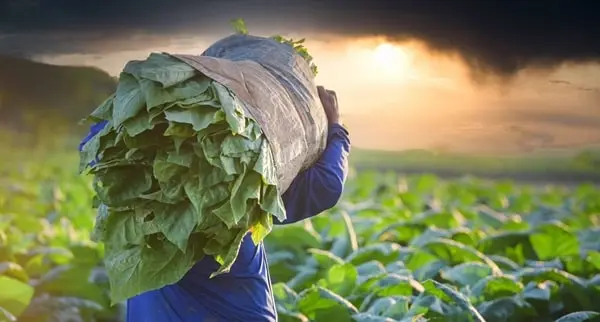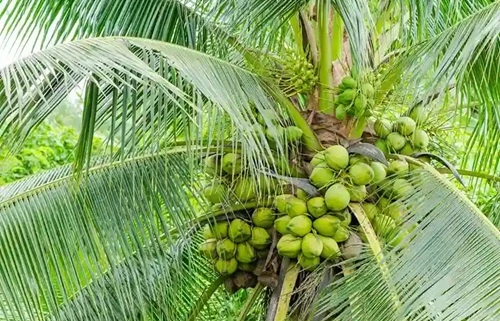If you are thinking about adding a natural touch to your home, workspace or garden this article is for you.
Creeper plants use other structures for support. They can grow on walls, fences, and other plants or trees. They add beauty and aesthetic value to the space, which is the best option for creating a private space. Creepers are popular for their versatility and fit well in various landscapes and urban spaces. People appreciate the benefits they provide to the environment and human health. Let’s get started and choose one of them according to your space.
1. Money plant:
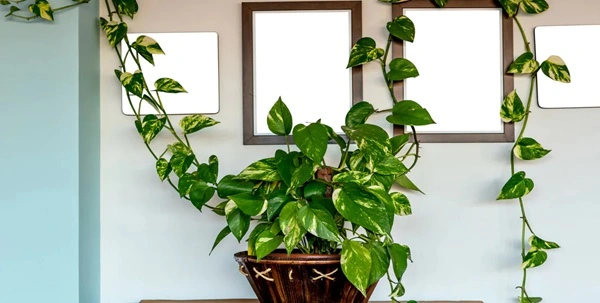
There can’t be any other plant in the world that is as non-problematic as this one. They come in various shapes and sizes but are found in almost every household in south India. They don’t blossom but are often associated with prosperity as the plant never dies easily.
They are self-seeding plants because they grow without human intervention. They produce seeds and germinate without any care or human intervention. They are extremely easy to propagate from cuttings or stem sections, and thus, they are often shared among neighbors, friends, and family.
2. Bougainvillea:

One of the most common and fastest growing creeper plants in India, which is known for its rush of colours. These plants trail along the walls and capture our attention in no time. Propagate them outdoors or in vast backyards, these beautiful greeneries readily accept it as their home. Some varieties reach up to 40 feet, hence if you are thinking about planting bougainvillea, ensure you have enough space in your garden.
The plants are not very frost tolerant and bloom very often in warmer areas. Their showy pink flowers, which are modified leaves, add brightness to your space very quickly. They love a slow release of fertilizer during the growing season. The plant has a couple of varieties, such as Barbara Karst, California Gold, and Juanita Hattan. People select their variants based on their colour choice.
3. Bleeding Heart Vine:
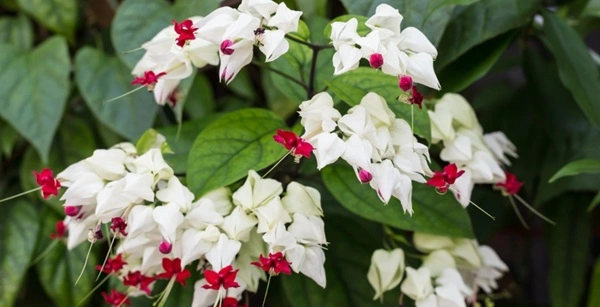
Bleeding Heart vine is scientifically called Clerodendrum thomsoniae. They grow up to 13 feet tall but are known for their stunning flowering vine that resembles a human heart dripping a droplet of blood, thus got its common name, Bleeding heart vine.
The creeper is extremely captivating due to the bright red and white contrast. It easily grows in well-draining soil and requires partial shade but tolerates full shade, too. It demands regular pruning for restricted or controlled growth and shape, but it fits into any garden area or landscape. It prefers slightly moist soil but doesn’t tolerate wet throughout. The plant’s flowers are quite fragrant, and they are generally described as a mixture of honeysuckle, roses, and jasmine.
4. Flame vine:
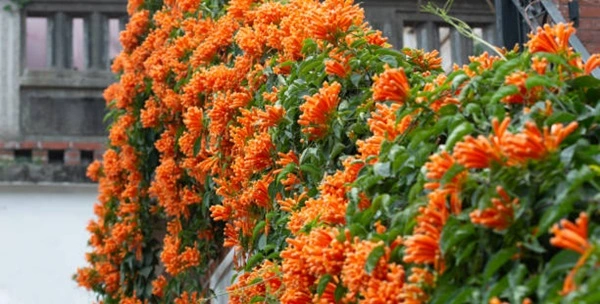
If you love bright orange-coloured flowers and are after plants that grow rapidly, you will love Flame Vine. Flame vines got their name due to their bright orange-coloured flowers. The plant grows up to 5 feet in height and is native to South America. It is known for its rapid growth and requires only a bit of care.
Flame vine is a popular choice among gardeners and plant enthusiasts as it makes the space more pristine and elegant. They grow best when kept under direct sun; hence, finding the right spot can be quite difficult, as the plant requires at least 6-8 hours of sunlight. However, they do well with partial shade as well. They also adopt a well-drained pot if the garden is not possible. Thus, people prefer Flame Vine for its minimal maintenance and environmental tolerance.
5. Rangoon Creeper:
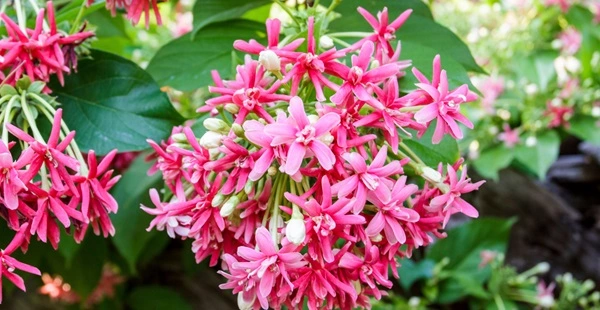
Plant enthusiasts are after popping colours of red and pink and lovely aromas. The tubular blossoms of Rangoon creeper bring the aroma and colour to your lawn. Although the colour of the flowers changes with age, they are quite tough and tolerate any climate change.
The sweet smell of the flower attracts people and various pollinators, thus making it more beneficial to the environment and ecosystem. The plant is believed to possess metabolic compounds that are used in some potential drugs. On the other hand, they are used in salads, desserts, and drinks as they infuse their delicate flavours and bring a lovely twist to the dining experience.
6. Morning glory:
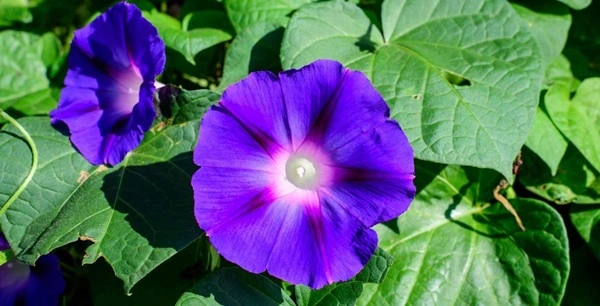
Morning glory creeper became known as the plant blooms during the early morning hours. They showcase their splendour with the rising sun. They produce short-lived blooms; thus, in Japanese philosophy, it symbolizes the importance of appreciating impermanence.
Some philosophers have connected the plant with valuable philosophies and have set the flowers as a reminder of life’s brevity and profound emotions that nature can evoke in us. Philosophies aside, the bright, vibrant blossoms attract essential pollinators, foster a healthy ecosystem, and contribute more to healthy biodiversity and plant reproduction.
7. Ivy:
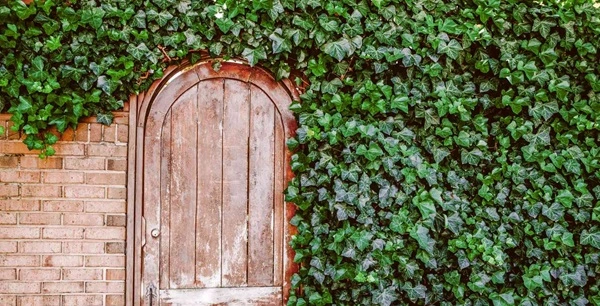
If you have binge-watched plant-related videos on social media, you might have already learned about the importance of growing ivy plants in your home. Post-pandemic, people are becoming more health conscious and trying to do their best to improve their health. There could be no easier way of improving respiratory health than growing creepers like Ivy.
Ivy plant is known for its purification, as it absorbs air pollutants such as benzene, formaldehyde, and trichloroethylene. On the other hand, they can be trained to climb your house walls, especially brick walls, trails, fences, and along the walls of your garden areas. It is best to provide private space and screening.
8. Passionflower:
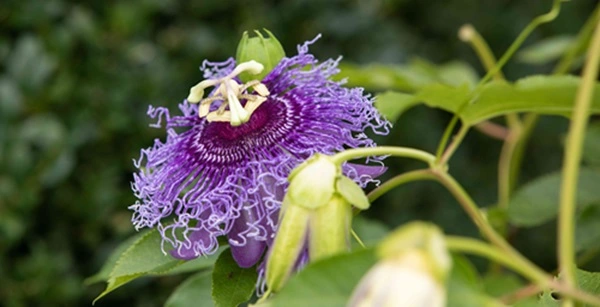
If you grow plants for more than a couple of reasons and benefits, you would love to add passion flowers to your garden. Passion flowers induce sleep and treat anxiety, especially anxiety before surgery. Some people consume passion flowers to treat insomnia, stress, and pain relief. Some prefer to add flowers to their beverages and foods for flavouring.
You may be surprised to know that there are over 500 varieties of the plant, each known for its unique properties and uses. Some are commonly cultivated for ornamental purposes, while others are grown for their fruit and medicinal values.
9. Jasmine:
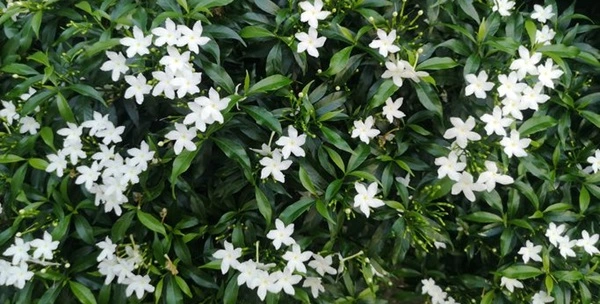
There are over 200 species of jasmine, It is mostly famous for its intensely fragrant white flowers. Jasmine creepers adapt to sunny or partially sunny spots. They adore humidity, and their stems should be tied fairly to heavy support to grow well and require pruning after flowering. Jasmine is so common in India, where women decorate their hairstyles and hairdos with jasmine flowers. They are used in religious customs, decorating, and several other spaces. The majority of Indians love the jasmine flavor. Hence they have included the essence in several ways, such as perfumes, food, beverages, frozen desserts, candy, baked goods, and whatnot. Jasmine scent is known to improve mood and reduce anxiety and food cravings.
10. Curtain creeper:
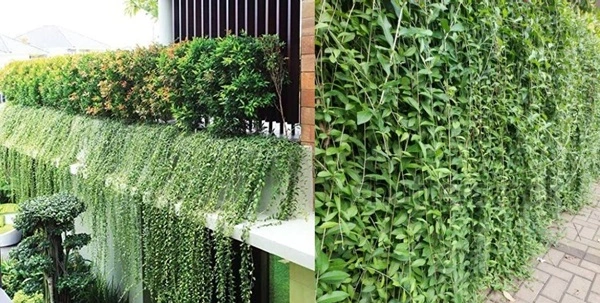
People who prefer to cover the open space in their garden and add a natural element come after curtain creeper. Curtain creepers grow long enough to cover a 13-foot wall. They resemble curtains, and they are cultivated as ornamental plants, as their lush green foliage creates a beautiful curtain. They don’t have predominant medicinal or culinary usage, but they do well as standalone decorative plants.
Conclusion:
Creepers often need clarification from climbers as they need support to grow. Climbers grow vertically, while the creepers grow horizontally. But both of them add cultural significance in India, improve air quality, and provide medicinal benefits. They are considered priceless assets to both the environment and society. Some endeavors in growing creepers in your garden or indoors can be helpful to enhance the stability of the ecosystem.
